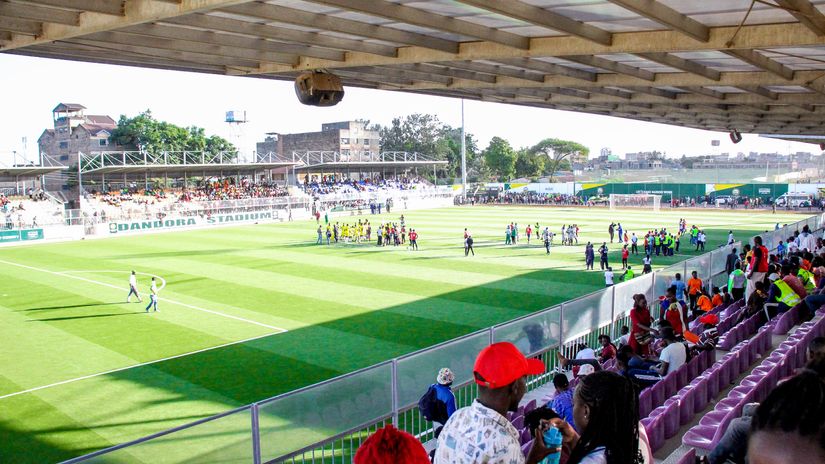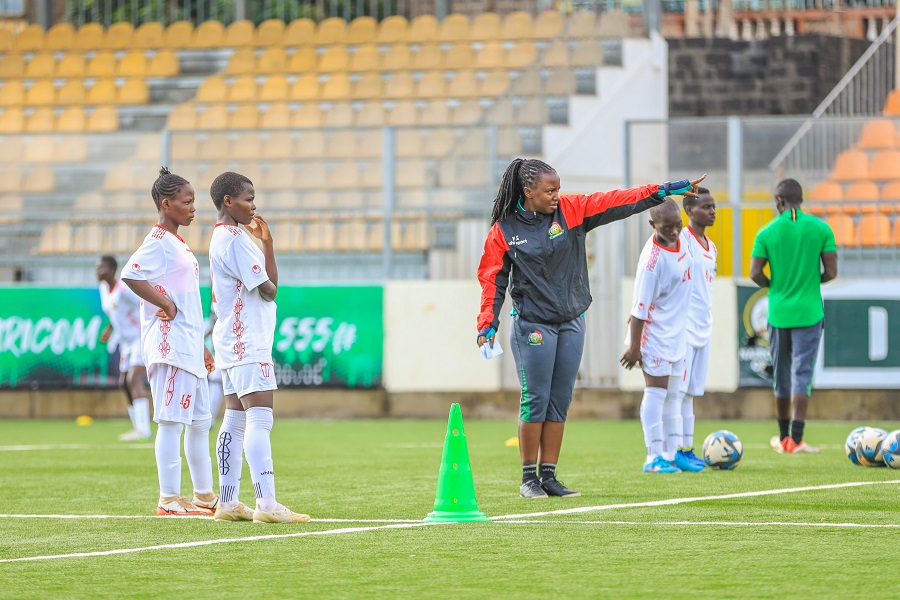The state of Stadiums in Kenya remains wanting despite attempts by different government administrations to uplift the infrastructural component of these sporting facilities. However, this problem is likely to be alleviated to some extent, following Kenya’s bid to host the 2027 Africa Cup of Nations (AFCON). The country, through the Pamoja Bid, is one of the three in the East African region that will co-host the renowned event. Consequently, plans to upgrade four stadiums to international standards are underway. Despite this remarkable development, a myriad of county-based stadiums remains underdeveloped or stalled as far as infrastructural upgrade is concerned.
When Stadium Inaccessibility Becomes a Force of Demotivation
In an exclusive interview with SportsBoom, Ken Kenyatta, a former AFC Leopard star, a retired goalkeeper of Kenya’s national team Harambee Stars and the current head coach of FC Talanta, gave valuable insights about how the state of sporting facilities in Kenya has affected football dynamics in the country. According to Kenyatta, “The lack of accessibility to adequately equipped facilities has negatively affected football players and athletes because they are required to pay in order to access training grounds, which is quite a demotivating factor.”
Barely Equipped Stadium bears the Brunt of Overuse
The Kenya Premier League (KPL) is greatly affected by loopholes in sporting facilities as most matches are redirected in already out of shape stadiums such as Kenyatta Stadium in Machakos. A majority of KPL teams use the Machakos stadium as their home ground owing to the unavailability of other suitable stadiums.
“Football clubs are required to pay exorbitant fees to book for matches in the only two stadiums in the country recognized by the Confederation of African Football (CAF), namely the Nyayo National Stadium and Moi International Sports Centre, Kasarani, both situated within Nairobi county” says Kenyatta.
The Kenyatta Stadium in Machakos is overused following the large number of matches it has been hosting for more than three years. As a result, it has become weary, with the stadium’s surface becoming muddy during rainy seasons.
Fan Base Thrill and Passionate Chants turn into Fading Echoes
Football clubs such as AFC leopards, Gor Mahia, Tusker, Kariobangi Sharks, Sofa Pak and Posta Rangers often host their home matches in this stadium. KPL officials note that the inability to host top-tier matches in Nairobi hurts the league because hosting matches in Machakos is costly due to the traveling costs. More so, clubs are unable to collect revenue because a huge fan base remain in Nairobi.
Despite its rich history and favourable proximity to Nairobi, the City Stadium has remained a shell of a sport facility since its closure in 2016. The renowned facility, which was once home to fan-infested matches that featured passionate thrills and chants, would have been an ideal home ground to a majority of Nairobi-based KPL teams. “The renovation of City Stadium should have been a priority for the Nairobi county because it’s at the centre of Nairobi, making it an absolute spot for driving revenue-based tournaments and encouraging talent growth,” laments Kenyatta.
Kenyatta further notes, “A major way of resolving this menace is by improving the infrastructural state of the available stadiums, particularly the abandoned ones, and also building additional ones.” Sadly, some sporting grounds hosting KPL matches like Chemilil Sports Complex, Ruaraka, and Mumias Sports Complex are in a dilapidated state, making them unfit to host even the most basic tournaments. As a result, it becomes difficult to generate revenue, which renders football clubs unable to empower themselves financially.
Time for Benchmark from Pacesetters?
In comparison to other East African countries like Tanzania and Uganda, Kenya lags behind in its commitment to uplift the face of stadia in the country, given the sorry state of even the major sporting facilities. The national and county governments as well as other relevant stakeholders need to borrow a leaf from South Africa, where according to Kenyatta, “The cushioning of all schools-associated stadiums by SuperSport has led to tremendous football growth because football clubs have free access to more training grounds.
A Wakeup Call to Ditch Passiveness and Embrace Intentionality
The inadequacy of sporting facilities in Kenya is largely hooked on the passiveness of the government, with respect to making intentional efforts to increase the number and the infrastructural capacity of stadiums. For instance, county governments have spent a fortune renovating county-level stadiums that still fail to meet CAF standards. This issue translates to an inability to surpass capacity and infrastructural quality standards, which sets the bar low for football talent in Kenya. A lack of accountability and commitment by the government continues to patch wider holes in the fabric of Kenyan football, rendering future talent less hopeful.




